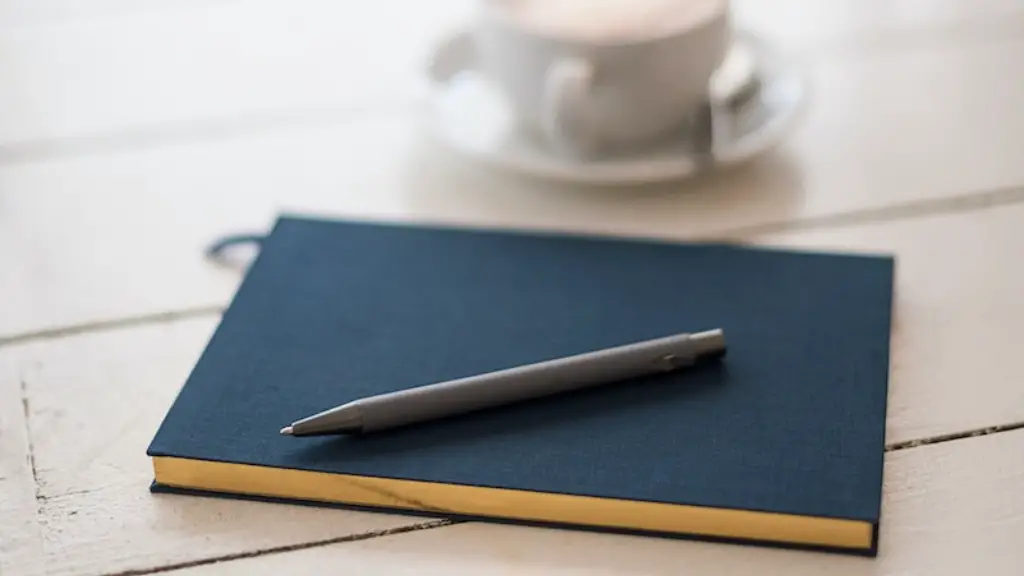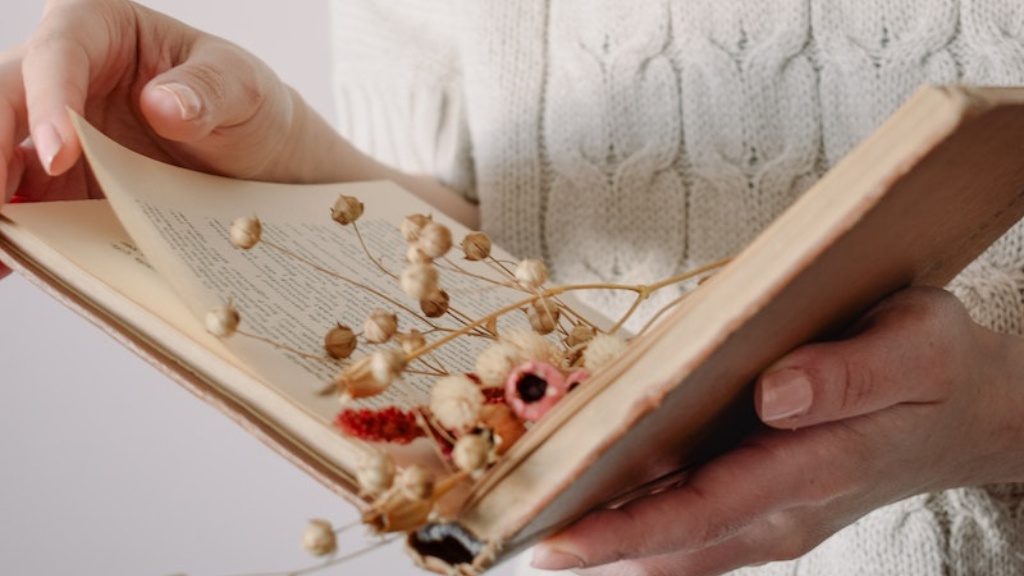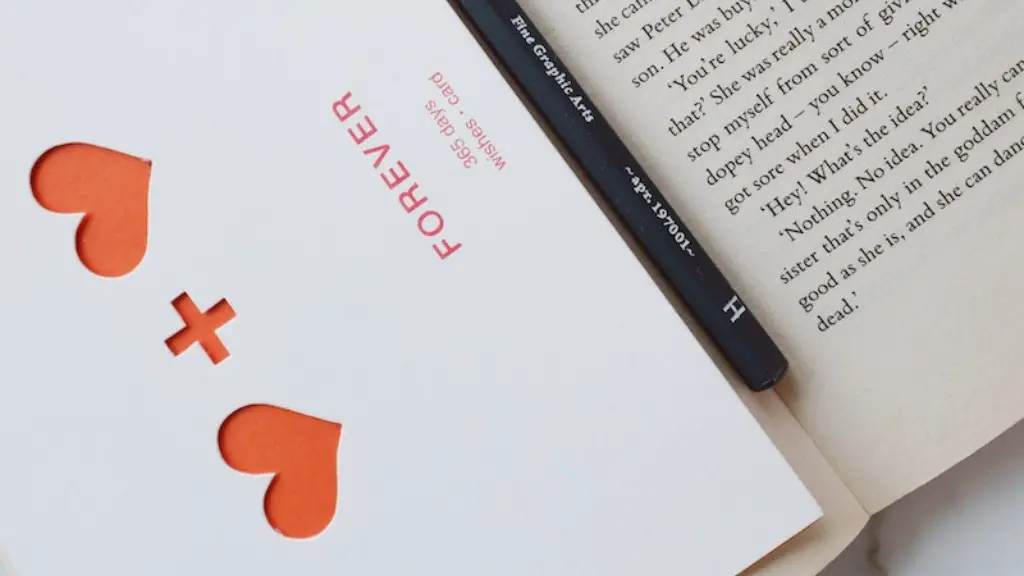Quality of Rhymes
Poetry is a form of artistic expression, and part of what makes the written or spoken word an artform is the quality of rhymes. Rhymes add a musical and lyrical element to poetry that is quite different from prose. There are many qualities and attributes of rhymes that make them appealing, but foremost among them is that they add a perfect balance and symmetry to a piece without sacrificing meaning.
Rhymes support the meaning of a poem and can create a deep emotional impact. By repeating words or sounds and linking them in a particular way, they emphasize the overall message of the poem. By creating a rhythmic or lilting flow, they entrance the reader and make them remember the words. Rhyming adds an aesthetically pleasing quality to the piece; readers enjoy and engage in poems with rhymes more easily than in ones that lack them.
Rhymes can also give poems structure and order. They form patterns that generate feelings of familiarity, which in turn enhances comprehension of the poem. In addition, the patterns created by rhymes lead the reader along and ease their journey through the poem. Furthermore, when used cleverly, rhymes can create different levels of meaning within the poem.
The use of rhymes is a great way to really bring a poem to life. Additionally, alliteration – when a given letter or sound is used within a line or verse – gives a piece rhythm and flow, and evokes certain emotions related to the words used. Rhymes also help unify a poem, allowing the individual parts to intertwine and create a complete whole, which is often more enjoyable to read.
Types of Rhymes
When it comes to rhyming, there are several kinds of rhymes available to poets. End rhymes, which occur at the ends of lines, are the most frequent kind of rhyming. End rhyming reinforces a deeper meaning, helping the audience to better understand the poem. Internal rhymes, which occur at any point within a line, make the poem sound more musical and lyrical.
Half rhymes exist too, in which only the end part of a word is changed to create a rhyme. This technique, also known as slant rhyming, does not have the same impact as end rhyming, but works very well when used to contrast and contrastable images. Moreover, Rhyme scheme, in which lines of the poem have to rhyme in a particular pattern, is often used to give a poem a consistent sound. Finally, eye rhymes, or sight rhyme, occur when words look like they should rhyme, but do not in reality.
Significance of Rhymes
Rhymes can add layers of meaning and emotional depth to any poem. They become an integral part of the poem, enriching it and heightening the message. By making use of different kinds of rhymes, poets can tweak their work to evoke particular feelings and effectively express the nature of their ideas. Rhymes make poetry stand out from other forms of literature and in doing so, enhance the idea of it being a pure art form.
At the same time, incorporating rhymes in poetry is challenging since there are so many different kinds of rhymes to choose from, and finding the right combination for each poem is a delicate process. If a poet does not use rhymes correctly, it can completely change the atmosphere and mood of a poem. By using rhymes, poets are also in danger of having their work be perceived as weak and lacking in creativity.
Secondary Effects on Poetry from Rhymes
The use of rhymes in poetry has increased substantially over the years, with the majority of modern poems having some sort of rhyme. This has led to dramatic shifts in the way that people think about and appreciate poetry. In particular, rhymes help bridge the gaps between poetry and music, with some poets creating work that can be seen as a kind of music.
At the same time, incorporating rhymes into poems can also add a certain dimension of predictability. Rhymes can give readers a certain sense of expectation as they move through a poem, and can also be used to ignite associations and preconceived ideas about certain topics. By using rhymes, poets almost ensure a certain level of engagement with their poem, since readers are often familiar with the types of sounds used in them.
Reconciling Rhymes and Meaning
One of the key challenges in using rhymes in poetry is to ensure that they do not overshadow the message of the poem itself. Rhymes have to be used in such a way that they do not detract from the overall meaning of the poem, but instead add to it. To do this, poets have to be aware of how their rhymes can affect the overall purpose of their poem.
In some cases, the poet may choose to use rhymes sparingly and instead focus on the content of the poem. This allows the words to truly shine, as the audience is no longer distracted by the form of the poem. On the other hand, some poets may choose to use rhymes to emphasize certain words, ideas, or feelings in the poem. In this case, the poet must ensure that their rhymes do not detract from the overall message of the piece, but are instead complementing it.
Using Rhymes as an Organizational Tool
Many poets use rhymes as an organizational tool when writing their poems. By utilizing specific types of rhymes and patterns, they can structure and arrange their ideas in a particular way. This allows them to effectively express their thoughts and emotions while allowing the reader to follow along.
Rhymes can also be used to create tension, as the interruption of the rhyme can create a feeling of uncertainty. This can be used to push the plot or the development of the poem in certain directions. Similarly, rhymes can be used to mask certain words and give them an intriguing quality, making them stand out in a poem.
Rhymes in Modern Poetry
Over the years, there have been numerous attempts by poets to break from the traditional mold of rhymes, but eventually most of them have come back to using them in some way. Although the modern definition of poetry has moved away from the traditional constraints of rhyme, there are still many cases in which rhymes are heavily used, especially in the form of hip-hop and spoken word poetry.
This is because the use of rhyme helps to add an extra layer of complexity and emotion to a poem, something that is very difficult to achieve with words alone. In hip-hop and spoken word, this can help create a highly engaging and entertaining performance, with the rhymes contributing to an overall feeling of flow and meaning.
Conclusion
In conclusion, rhymes add a depth of complexity and meaning to any piece of work that is difficult to achieve without them. Rhymes help to support the meaning of a poem and create an aesthetically pleasing sound, which can in turn influence how readers understand and appreciate the poem. Different types of rhymes have different qualities and effects, so poets have to be aware of what they are using and why. Lastly, rhymes have become a powerful tool for modern artists, including hip hop and spoken word poets, in creating impactful pieces of work.




